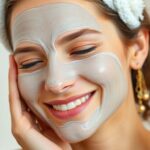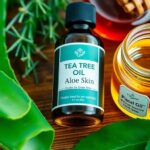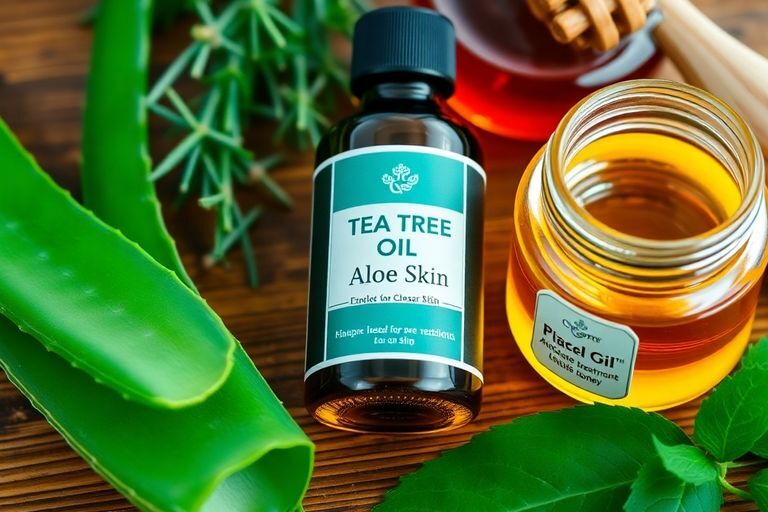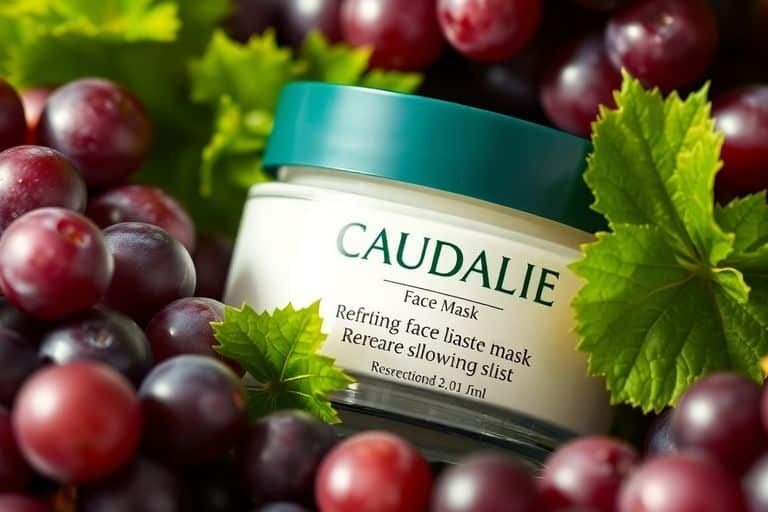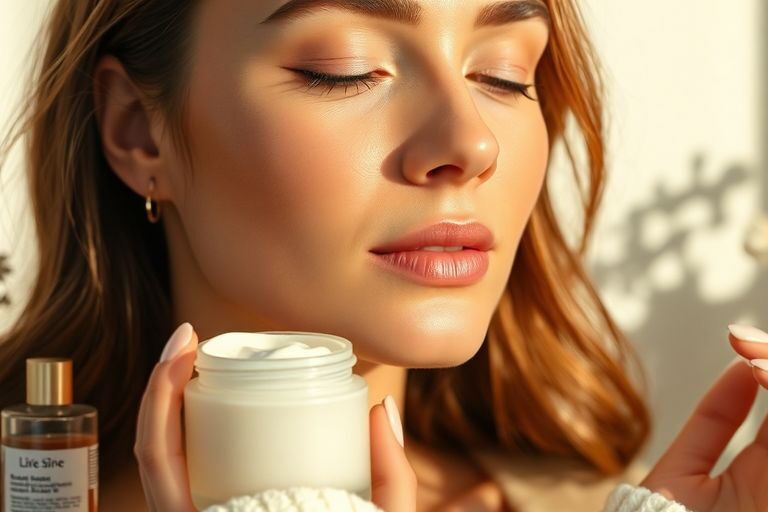Dealing with acne can be a real struggle, and it’s something that affects so many people, regardless of age. In this guide, we’ll break down the best products for acne prone skin, helping you understand what works, what doesn’t, and how to create a skincare routine that truly supports your skin. Whether you’re looking to tackle stubborn breakouts or just want to maintain clear skin, we’ve got you covered for 2025.
Key Takeaways
- Understanding different types of acne is crucial for effective treatment.
- Incorporate ingredients like salicylic acid and niacinamide into your routine.
- Avoid heavy oils and alcohol-based products that can worsen acne.
- A tailored skincare routine is essential for managing acne effectively.
- Lifestyle changes, including diet and stress management, can significantly impact skin health.
Understanding Acne: More Than Just Spots

Acne, right? We all know it. Spots, pimples, blemishes – whatever you call them, they’re annoying. But acne is way more complex than just a few surface imperfections. It’s a proper skin condition with different types, causes, and yeah, some seriously persistent myths floating around. Let’s get into the nitty-gritty so you can actually understand what’s going on with your skin.
The Different Types of Acne
Okay, so acne isn’t just one thing. There’s a whole family of spots, and knowing which one you’re dealing with is half the battle. Here’s a quick rundown:
- Blackheads: Those little black dots? Open pores clogged with oil and dead skin. They look black because the surface is oxidised, not because they’re full of dirt (so no squeezing!).
- Whiteheads: Similar to blackheads, but the pore is closed. That’s why they’re white or skin-coloured.
- Papules: Small, red, inflamed bumps. They’re tender to the touch and a sign of inflammation.
- Pustules: What most people think of as ‘pimples’. They’re red bumps with pus at the top. Again, inflammation is the culprit.
- Nodules: Large, hard, painful lumps under the skin. These are deep infections and can cause scarring. See a doctor for these.
- Cysts: Similar to nodules, but filled with pus. They’re also painful and likely to scar. Definitely doctor territory.
Common Myths About Acne
There’s so much misinformation out there, it’s hard to know what to believe. Let’s bust some common myths:
- Myth: Acne is caused by dirty skin. Nope! While keeping your skin clean is important, acne is more about oil production and inflammation than dirt. Over-washing can actually make it worse.
- Myth: Chocolate and greasy food cause acne. This one’s partially true. Diet can play a role, but it’s different for everyone. For some, dietary changes can help, but it’s not a universal trigger.
- Myth: Popping pimples gets rid of them faster. Absolutely not! Popping pimples can push bacteria deeper into the skin, leading to more inflammation, scarring, and infection. Hands off!
- Myth: The sun clears up acne. The sun can temporarily dry out your skin, making acne seem better, but it also damages your skin and can lead to more breakouts later. Always wear sunscreen.
The Role of Hormones in Acne
Hormones are often the sneaky culprits behind breakouts, especially for us women. Here’s the deal:
- Androgens: These hormones (like testosterone) increase oil production. That’s why acne is common during puberty when androgen levels surge.
- Menstrual Cycle: Hormonal fluctuations during your cycle can trigger breakouts. Some women find they get spots every month around the same time.
- PCOS: Polycystic Ovary Syndrome can cause hormonal imbalances that lead to persistent acne. If you suspect PCOS, see a doctor.
- Stress: Stress hormones can also mess with your skin. Finding ways to manage stress can actually help your acne. I find that stress management techniques are really helpful.
Understanding the root causes of your acne is the first step to finding the right treatment. Don’t just blindly try products – figure out what’s actually going on with your skin. It might take some time and experimentation, but it’s worth it in the end.
Essential Ingredients for Acne Prone Skin
I’ve spent years battling breakouts, and trust me, knowing your ingredients is half the battle. It’s not just about slapping on any old cream; it’s about understanding what each ingredient does and how it can help your skin. Let’s break down some of the MVPs in the fight against acne.
Salicylic Acid: The Pore Exfoliator
Salicylic acid is a beta hydroxy acid (BHA), and it’s my go-to for keeping pores clear. It works by exfoliating inside the pore, dislodging dead skin cells and excess oil that can lead to blackheads and whiteheads. Think of it as a tiny street sweeper for your face!
- It’s oil-soluble, meaning it can penetrate oily pores more effectively than water-soluble acids.
- It has anti-inflammatory properties, which can help calm down angry, red spots.
- I usually recommend starting with a low concentration (0.5-2%) to see how your skin reacts.
I’ve found that using a salicylic acid cleanser a few times a week can make a huge difference in preventing breakouts. Just be careful not to overdo it, as it can be drying.
Niacinamide: Reducing Redness and Inflammation
Niacinamide, also known as vitamin B3, is a real all-rounder. It’s fantastic for calming inflammation, reducing redness, and even minimising the appearance of pores. It’s like a soothing hug for irritated skin.
- It strengthens the skin barrier, helping to protect against environmental aggressors.
- It can help regulate oil production, which is great if you have oily skin.
- I’ve noticed it also helps fade post-inflammatory hyperpigmentation (those pesky dark marks left behind by spots).
Here’s a quick comparison of how niacinamide stacks up against other common ingredients:
| Ingredient | Benefit | Potential Drawback |
|---|---|---|
| Niacinamide | Reduces redness, strengthens barrier | Rarely causes irritation |
| Benzoyl Peroxide | Kills bacteria | Can be very drying |
| Salicylic Acid | Exfoliates pores | Can cause irritation if overused |
Retinol and Azelaic Acid: Texture Improvement
When it comes to improving skin texture and tackling stubborn acne, retinol and azelaic acid are my secret weapons. Retinol speeds up cell turnover, helping to unclog pores and prevent new breakouts. Azelaic acid is great for reducing inflammation and fading hyperpigmentation. It’s also safe to use during pregnancy, unlike retinol.
- Retinol can be irritating at first, so start with a low concentration and use it sparingly.
- Azelaic acid is generally well-tolerated and can be used twice a day.
- Both ingredients can make your skin more sensitive to the sun, so always wear sunscreen!
I often suggest alternating these ingredients – using retinol a few nights a week and azelaic acid on the other nights – to maximise their benefits without overwhelming your skin.
Products to Avoid for Acne Management
Navigating the world of skincare when you’re prone to breakouts can feel like a minefield. It’s not just about what to include in your routine, but also what to exclude. I’ve learned the hard way that certain products can sabotage your efforts, leading to more spots and frustration. Let’s talk about the culprits I actively avoid.
Heavy Oils and Comedogenic Ingredients
This is probably the most well-known rule, but it’s worth repeating: steer clear of heavy oils and comedogenic ingredients. These are substances that are likely to clog your pores, creating the perfect environment for acne to thrive. It’s not always obvious which ingredients fall into this category, so it pays to do your research.
Here’s a short list of ingredients I try to avoid:
- Coconut oil
- Cocoa butter
- Isopropyl myristate
- Palmitates
I always check the ingredient list of any new product before I even consider buying it. There are online resources that can help you identify comedogenic ingredients, so you don’t have to memorise a huge list.
Alcohol-Based Products: The Drying Effect
It might seem counterintuitive, but products high in alcohol can actually worsen acne in the long run. While they might provide a temporary feeling of cleanliness and oil control, they strip your skin of its natural moisture. This can lead to over-drying, which triggers your skin to produce even more oil to compensate – a recipe for disaster.
Physical Exfoliants: Risks of Micro-Tears
I used to be a big fan of physical exfoliants, like scrubs with beads or harsh brushes. The immediate smoothness they provided was so satisfying! However, I soon realised they were doing more harm than good.
Here’s why I’ve ditched them:
- They can cause micro-tears in the skin, leading to inflammation and irritation.
- They can spread bacteria around your face, potentially worsening existing acne.
- They can be too abrasive, especially for sensitive or inflamed skin.
Instead, I now opt for gentle chemical exfoliants like salicylic acid or adapalene 0.1% which offer a more controlled and less damaging way to remove dead skin cells.
Building a Tailored Skincare Routine
Okay, so you’ve got the lowdown on acne and the ingredients that can help. Now, let’s get into the nitty-gritty of building a skincare routine that actually works for your skin. It’s not about slapping on every product you can find; it’s about being smart and consistent.
Morning Routine Essentials
My morning routine is all about prepping my skin for the day and protecting it from, well, everything. Here’s what I do:
- Cleanse: I start with a gentle, non-comedogenic cleanser to wash away any grime that’s built up overnight. You don’t want anything too harsh that’ll strip your skin.
- Serum: Next up, a serum. I usually go for something with antioxidants to fight off pollution and free radicals. Vitamin C is a good shout.
- Moisturise: Even if you have oily skin, don’t skip moisturiser! A light, oil-free one will do the trick.
- Sunscreen: This is non-negotiable. Every. Single. Day. Find a broad-spectrum sunscreen with at least SPF 30.
Evening Routine for Acne Control
Evening is when I bring out the big guns. This is the time to really target those spots and prevent new ones from forming.
- Double Cleanse: If I’ve been wearing makeup, I double cleanse. First, an oil-based cleanser to remove makeup, then a gentle cleanser to really clean my skin.
- Treatment: This is where I use my active ingredients, like retinol or salicylic acid. But be careful not to overdo it – start slow and build up tolerance.
- Moisturise: Again, hydration is key. A slightly richer moisturiser at night can help repair your skin while you sleep.
The Importance of Non-Comedogenic Moisturisers
I can’t stress this enough: using non-comedogenic moisturisers is vital if you’re prone to acne. ‘Non-comedogenic’ basically means it won’t clog your pores. Look for this label on everything – from your cleanser to your makeup. Trust me, it makes a difference.
Finding the right moisturiser can be a game-changer. It’s about balancing hydration without adding to the problem. I’ve spent ages trying different ones, and it’s worth the effort to find something that works for you. Don’t be afraid to experiment!
Spot Treatments and Targeted Solutions

Okay, so you’ve got a big event coming up, and BAM! A spot appears. We’ve all been there. Spot treatments are like the superheroes of skincare – small but mighty when you need them most. But when do you actually need them, and which ones are worth the hype?
When to Use Spot Treatments
Spot treatments aren’t for everyday use, think of them as emergency solutions. They’re best for those pesky, individual pimples that pop up unexpectedly. If you’re dealing with widespread acne, a full-face treatment might be more effective. Spot treatments are great for:
- Quickly reducing inflammation on a single spot.
- Targeting whiteheads or blackheads that are particularly stubborn.
- Preventing a small blemish from becoming a major breakout.
Best Over-the-Counter Options
The world of over-the-counter spot treatments is vast, but a few ingredients consistently stand out. Here’s a rundown of some top contenders:
- Benzoyl Peroxide: This is a classic for a reason. It kills acne-causing bacteria and helps to dry out the spot. Start with a low concentration (2.5%) to avoid irritation. You can find benzoyl peroxide in products like CeraVe blemish control gel.
- Salicylic Acid: A brilliant exfoliator that helps to unclog pores. It’s gentler than benzoyl peroxide and great for blackheads and whiteheads.
- Sulphur: A more old-school ingredient, but still effective at reducing inflammation and oil. It can have a slight smell, so use it sparingly.
- Acne Patches: These hydrocolloid stickers are fantastic for drawing out impurities and protecting the spot from further irritation. I’ve had great success with Dots for Spots acne patches. They also stop you from picking!
I’ve found that the key to successful spot treatment is consistency and patience. Don’t expect overnight miracles, and be careful not to over-apply the product, as this can lead to dryness and irritation.
Prescription Treatments: When to Seek Help
Sometimes, over-the-counter treatments just don’t cut it. If you’ve been battling persistent or severe acne, it might be time to see a dermatologist. They can prescribe stronger treatments, such as:
- Topical Retinoids: These are stronger versions of retinol and can significantly improve skin cell turnover and reduce inflammation.
- Prescription-Strength Benzoyl Peroxide: Higher concentrations can be more effective but also more irritating, so they need to be used under medical supervision.
- Topical Antibiotics: These can help to kill bacteria and reduce inflammation, but they’re usually used in combination with other treatments to prevent antibiotic resistance.
Consider seeing a specialist if:
- Your acne is severe or scarring.
- Over-the-counter treatments aren’t working.
- You’re experiencing significant psychological distress due to your acne.
Remember, everyone’s skin is different, so what works for one person might not work for another. It might take some trial and error to find the right spot treatment for you, but don’t give up! And always patch-test new products to avoid any adverse reactions.
Lifestyle Tweaks for Better Skin Health
It’s easy to get caught up in skincare products, but sometimes the best changes come from within. I’ve found that tweaking my lifestyle has made a noticeable difference in my skin. It’s not just about what you put on your skin, but also what you put in your body and how you manage stress.
Dietary Changes That Can Help
What I eat definitely impacts my skin. I’ve noticed a connection between certain foods and breakouts. It’s not a one-size-fits-all thing, but here’s what I’ve learned:
- Reduce Sugar Intake: I try to limit sugary drinks and processed sweets. Too much sugar can lead to inflammation, which can worsen acne.
- Incorporate Anti-Inflammatory Foods: Things like fatty fish (salmon, mackerel), nuts, and leafy greens are great. They’re packed with nutrients that can help calm inflammation.
- Stay Hydrated: Drinking plenty of water helps keep my skin hydrated and can flush out toxins. I aim for at least 8 glasses a day.
I’ve found that keeping a food diary helps me track what I eat and how my skin reacts. It’s a bit of effort, but it’s worth it to identify potential trigger foods.
Stress Management Techniques
Stress is a major acne trigger for me. When I’m stressed, I tend to break out more. So, finding ways to manage stress is crucial. Here are a few things that work for me:
- Mindfulness and Meditation: Even just 10 minutes of meditation a day can help calm my mind and reduce stress levels.
- Regular Exercise: Exercise is a great stress reliever. I try to get at least 30 minutes of exercise most days of the week. It doesn’t have to be intense – a brisk walk or a yoga session can do the trick.
- Adequate Sleep: Sleep deprivation can increase stress hormones, which can lead to breakouts. I aim for 7-8 hours of sleep each night.
The Impact of Sleep on Skin
Sleep is when my skin repairs itself. Skimping on sleep can disrupt this process and make acne worse. Here’s why sleep is so important:
- Cell Turnover: During sleep, my skin cells regenerate and repair themselves. This helps to keep my skin looking fresh and healthy.
- Reduced Inflammation: Sleep helps to reduce inflammation throughout my body, including my skin. This can help to prevent breakouts.
- Hormone Regulation: Sleep helps to regulate hormones, including those that can contribute to acne. Getting enough sleep can help to keep these hormones in balance.
I’ve found that establishing a consistent skincare regime and sleep schedule has made a big difference. It’s all about finding what works best for you and making it a part of your daily routine.
Emerging Therapies and Innovations
Acne treatment is moving fast! It’s not just about the usual creams anymore. We’re seeing some really cool stuff coming out that could change how we deal with spots forever. I’m excited to share what I’ve learned about the latest breakthroughs.
Latest Breakthroughs in Acne Treatments
Okay, so what’s new? Well, a lot actually. Scientists are looking at acne in totally different ways now. It’s not just about killing bacteria; it’s about understanding the skin’s ecosystem and how to balance it. Here’s a quick rundown:
- Topical Antiandrogens: These are creams that block hormones in the skin, reducing oil production right where you need it. Think of it as a targeted approach to hormonal acne.
- Laser Treatments: Special lasers can now target oil glands directly, shrinking them and reducing oil production. It’s like hitting the reset button on your skin.
- Combination Therapies: Doctors are finding that using multiple treatments at once – like a retinoid with an antibiotic – can be super effective. It’s like attacking acne from all angles.
The Future of Acne Management
I reckon the future of acne treatment is all about personalised medicine. Imagine getting your skin analysed and then getting a treatment plan designed just for you! That’s where we’re headed. Here’s what I’m keeping an eye on:
- Microbiome Analysis: Understanding the bacteria on your skin can help doctors choose the right treatments to balance your skin’s ecosystem. It’s like knowing exactly what your skin needs.
- Genetic Testing: Your genes can influence how your skin reacts to treatments. Genetic testing could help doctors predict which treatments will work best for you. It’s like having a crystal ball for your skin.
- AI-Powered Skincare: Apps and devices that analyse your skin and recommend products are getting smarter all the time. Soon, they might be able to create a custom skincare routine that adapts to your skin’s needs in real-time. It’s like having a personal dermatologist in your pocket.
I think we’re moving towards a world where acne treatment is less about trial and error and more about precision. It’s about understanding your skin’s unique needs and tailoring treatments to match. That’s a future I’m really excited about.
Integrating Technology in Skincare
Technology is changing everything, and skincare is no exception. From apps that track your skin’s progress to devices that deliver targeted treatments, there’s a lot happening. Let’s look at some examples of acne treatment tech:
- Blue Light Therapy Devices: These devices use blue light to kill acne-causing bacteria. They’re small, portable, and you can use them at home.
- Micro-Needling Devices: These devices create tiny punctures in the skin, which can help products penetrate deeper and stimulate collagen production. It’s like giving your skin a mini-makeover.
- Smart Mirrors: These mirrors analyse your skin and provide personalised recommendations. They can even track your progress over time. It’s like having a skincare expert in your bathroom.
I think these technologies are going to make it easier than ever to manage acne and achieve clear, healthy skin. It’s an exciting time to be alive (and have skin!).
Final Thoughts on Managing Acne-Prone Skin
In conclusion, tackling acne-prone skin can feel like a never-ending battle, but with the right products and a consistent routine, it’s definitely manageable. Remember, what works for one person might not work for another, so don’t hesitate to experiment a bit to find your perfect match. Focus on ingredients like salicylic acid and niacinamide, and steer clear of heavy oils and alcohol-based products that can irritate your skin. And if you’re ever in doubt, consulting a dermatologist can provide tailored advice that suits your specific needs. With patience and the right approach, clearer skin is within reach.
Frequently Asked Questions
What causes acne to develop?
Acne can develop due to a mix of factors like hormones, oily skin, bacteria, and clogged pores. It often happens during puberty but can affect anyone.
Are all skincare products safe for acne-prone skin?
Not really. Some products can make acne worse, especially those with heavy oils or alcohol. It’s important to choose non-comedogenic products.
How can I create a skincare routine for acne?
A good routine includes gentle cleansing, using treatments with ingredients like salicylic acid, and moisturising with non-comedogenic products.
When should I see a dermatologist for acne?
If over-the-counter treatments aren’t working after a few weeks, or if your acne is severe, it’s a good idea to see a dermatologist.
Can diet affect my acne?
Yes, certain foods like dairy and sugary snacks may trigger breakouts in some people. Eating a balanced diet can help improve your skin.
What are some effective treatments for acne?
Effective treatments include topical creams with salicylic acid or retinoids, and in some cases, oral medications like antibiotics may be needed.

